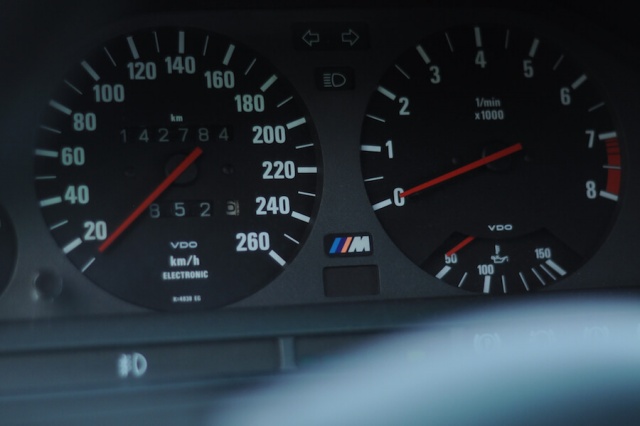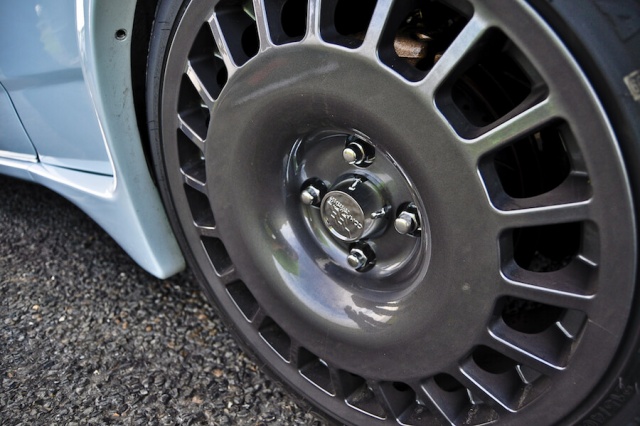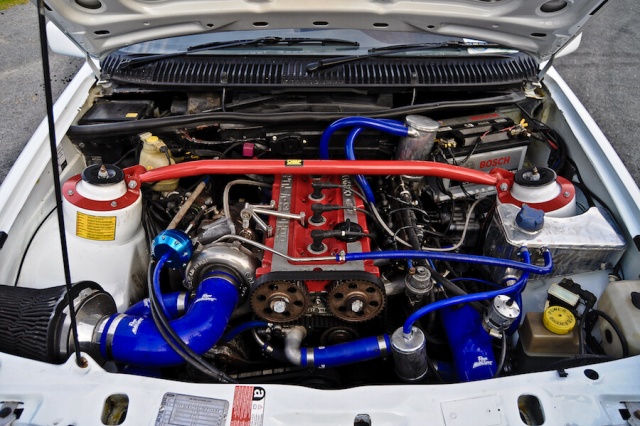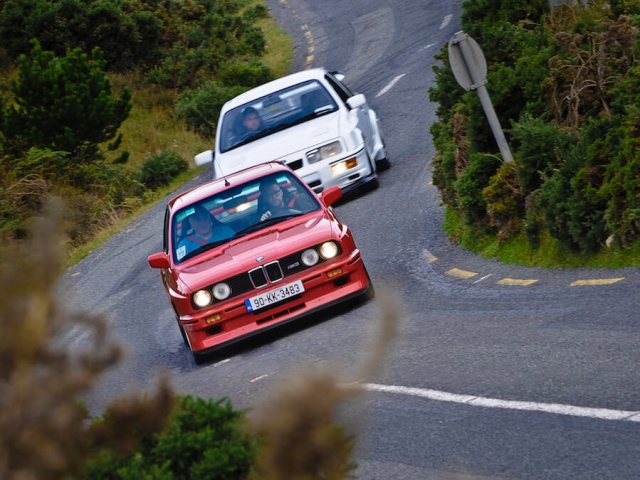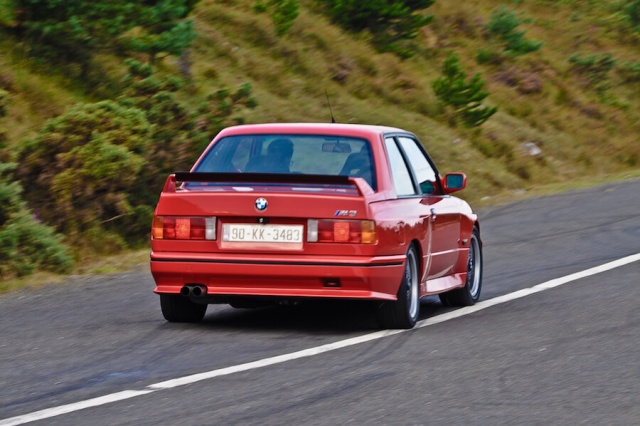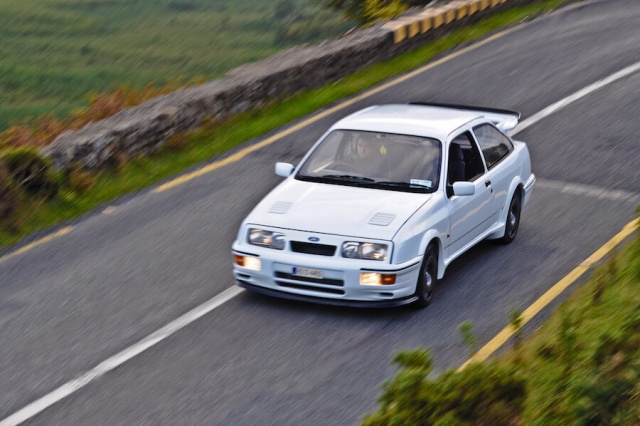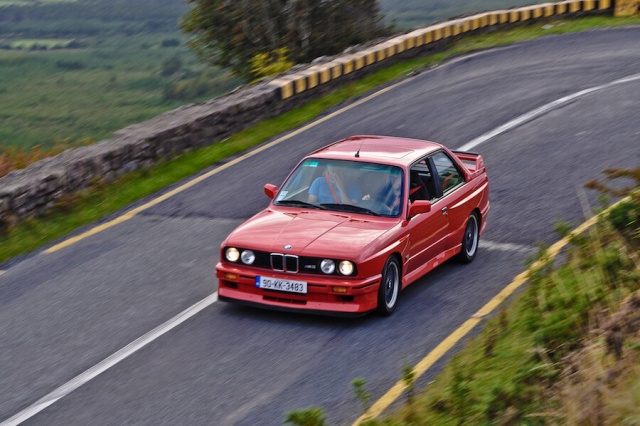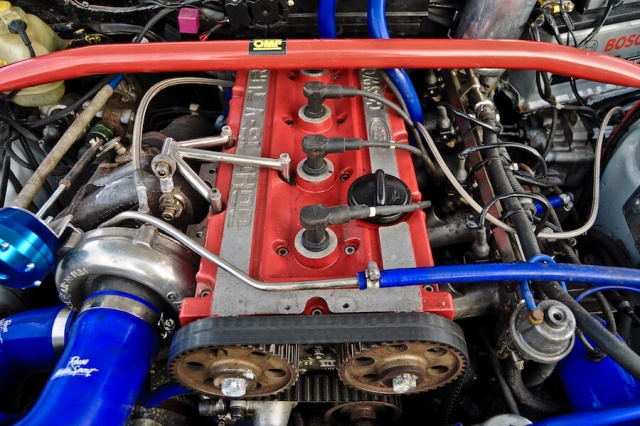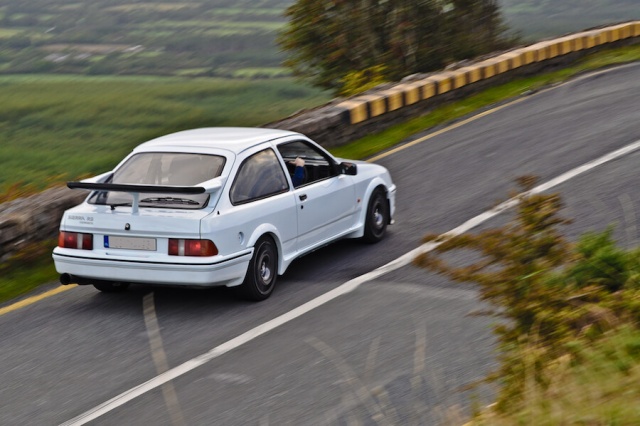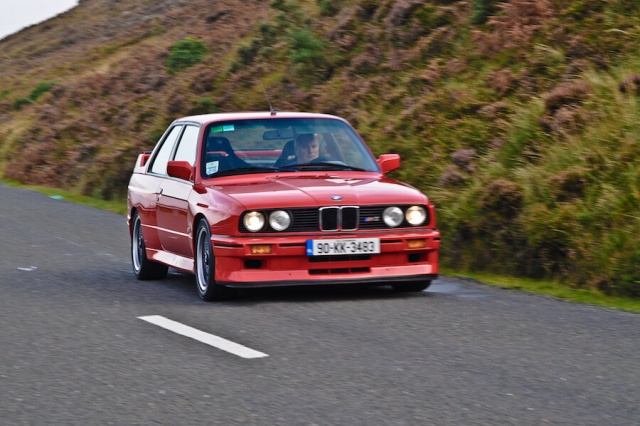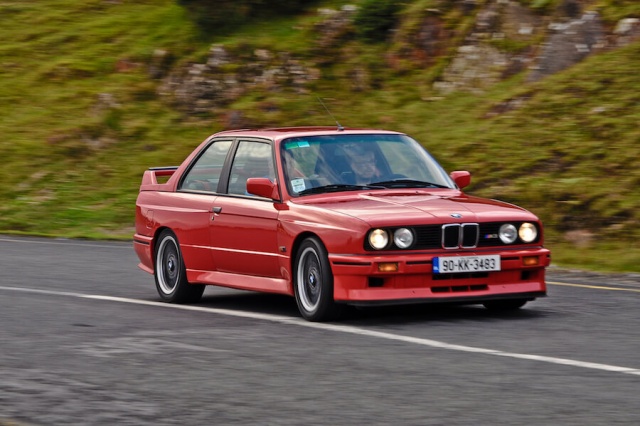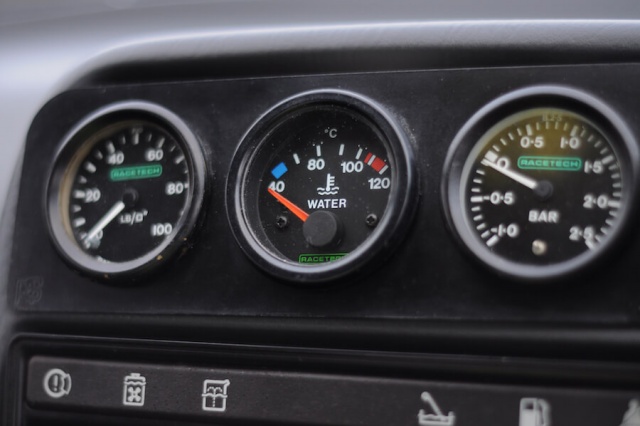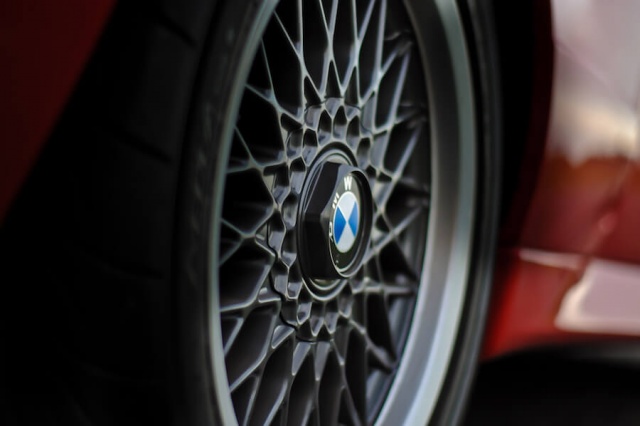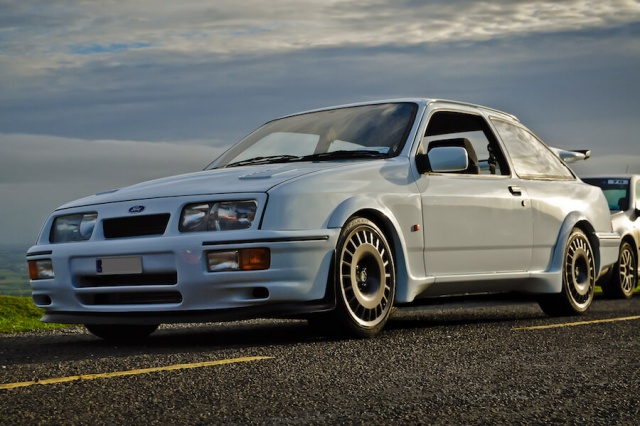If you wanted to win in the hotbed that was Touring Car racing in the 1980s, converting a road car to race trim simply wouldn't cut it. You needed to design your racing car with all the bits and bobs required to succeed, then toddle along to the nice people in Marketing & Finance and convince them that you wanted to build 5,000 road-eligible versions in order to qualify for homologation.
While this was a nightmare for product planners, accountants and insurance companies, it also created some of the most spectacular beasts ever to appear in a dealer's showroom. The FIA's regulations stipulated that Group A racers had to have strong roots in production vehicles, so any manufacturer that was serious about winning complied. Two of the most successful makers were Ford and BMW, and today we've gathered a three-door Sierra Cosworth and an E30 M3 to discover exactly what makes them so special.
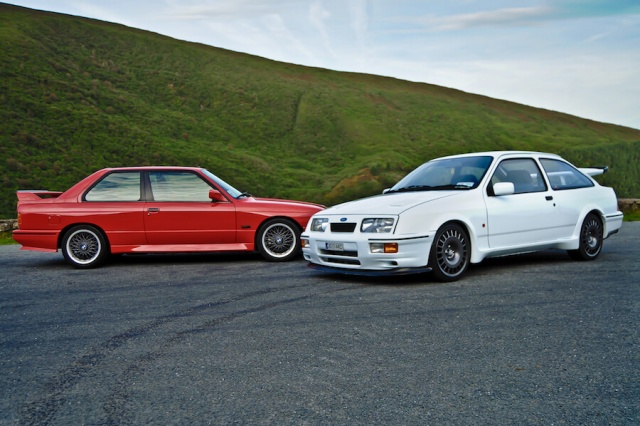
"Is that a Cosworth?" comes the cheery enquiry from the middle-aged lady at the toll booth. It's 6am, and I'm slightly groggy from the combination of an early start and the fumes that a Cosworth YB engine exhales. "Go on, give it some beans!" she giggles as she hands back my change. It would be rude not to oblige, wouldn't it?
Cruising along in fifth after another boost-filled blast up through the gears, watching the needle on the fuel gauge head south at a frankly hilarious rate, it's difficult not to smile at the reaction that Boreham's bruiser elicits from pretty much everyone. You want to be noticed? Drive a bright white Sierra Cossie. This isn't a car for shrinking violets or those looking to fade inconspicuously into their surroundings.
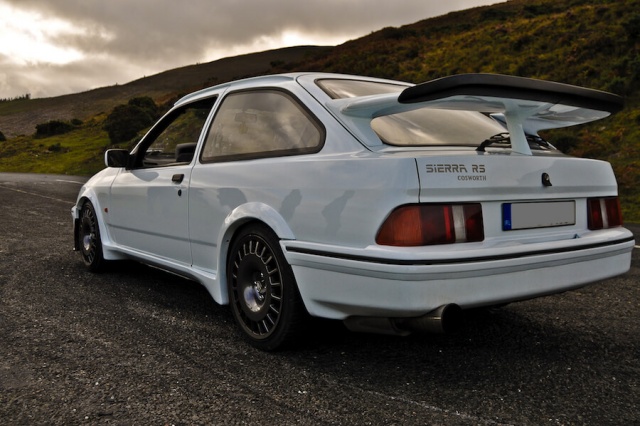
We picked the car up the evening prior to the shoot from owner John, who is either extremely trusting or suffers from a severe lack of imagination, handing the keys over with barely a worry. His only advice is to "watch her if it's wet, she's boosting at 1.6 bar so it's good for around 350hp". I like John.
Stopping at a nearby fuel station to brim the tank, a young boy almost tugs his mother's hand off as he tries to lead her over to the car for a better look. Men who were young boys a long time ago stop and stare, open-mouthed as the Cossie burbles past. It's hard to imagine that a new Ferrari would attract this much attention, but it's all positive and I learn to enjoy it. Catching glimpses of the car's reflection in shop windows, I find myself grinning at the cartoonish shape and already I'm falling for the old Ford.
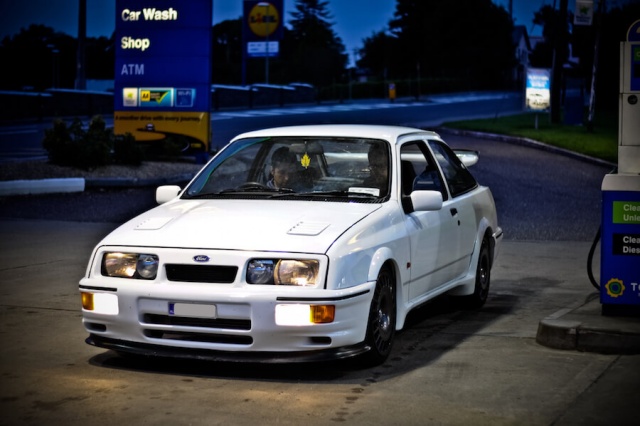
There's a reason why it looks so lairy of course, and that reason is aerodynamics. The standard Sierra body suffered from lots of lift, even at moderate speeds, so Lothar Pinske's design featured some pretty outlandish modifications, chief of which was the 'whaletail' rear wing. Enthusiasm for the car's appearance from potential dealers and senior Ford personnel was understandably muted, but most changed their mind once they'd experienced how it went. The thing was a rocket. Ford's long-time partner Cosworth had added a 16-valve head and a turbocharger to the old 2.0-litre Pinto block, and the result was an unstressed 204hp in road trim. The story goes that Ford originally wanted an output of 180hp, but Cosworth struggled to hold the thing back…
Many revisions were made to the bodyshell and suspension to cope with the newfound power, and in standard trim a Cossie would brush 240km/h having dispensed with the 0-100km/h sprint in less than seven seconds. This may be junior hot hatch territory these days, but three decades ago it was big-league performance. An Evolution version quickly followed, named the RS500 (signifying the 500 units produced), featuring lots of mods intended to aid performance in the heat of competition such as an extra fuel rail and set of injectors, additional aero, a stronger engine block and an even bigger turbo. Power outputs of over 500hp on the race cars were common, and the Sierra was the canvas for one of the most iconic liveries of all time, the black Texaco-sponsored Eggenberger Motorsport beauty. Power and looks aside, the car was quick, if quite challenging to drive, and would win numerous Touring Car titles worldwide. Famous pilots included names like Soper, Ludwig, Johnson and Brock, and there is a mountain of period footage on YouTube to lose yourself in, the old Bathurst videos being a particular highlight.
After Group B rallying's demise and the subsequent banning of Ford's RS200 in 1986, the Cossie was pressed into service on the stages, with mixed results. Two-wheel drive hampered it on all but the driest of tarmac, and gravel rallies were a sobering experience against the might of the all-wheel-drive Lancias and Toyotas. The car had more success at national level, and numerous examples raced on Irish roads driven by the likes of Bertie Fisher, Kenny McKinstry and Frank Meagher. A young Colin McRae even tried his hand in a few examples, leading to some large bills for the Boreham team as the Scot found his own and the car's limits, usually by going far beyond them.
So the Sierra has motorsport pedigree bursting out through its seam welds, but what of Munich's contender?
While Ford's RS creations have always had the rough-and-ready air of the blue-collar underdog about them, BMW's E30 M3 was a lesson in clinical efficiency. Let's start with the bodyshell as an example, of which only the bonnet and roof skin were shared with the regular E30 3 Series. Everything else was bespoke, from the deep front bumper and flared arches, all the way back to the extended C-pillars and raised boot lid. This was all purely functional of course, and contributed to a lowering of the drag coefficient from 0.38 to 0.33 in comparison to the standard E30 shape.
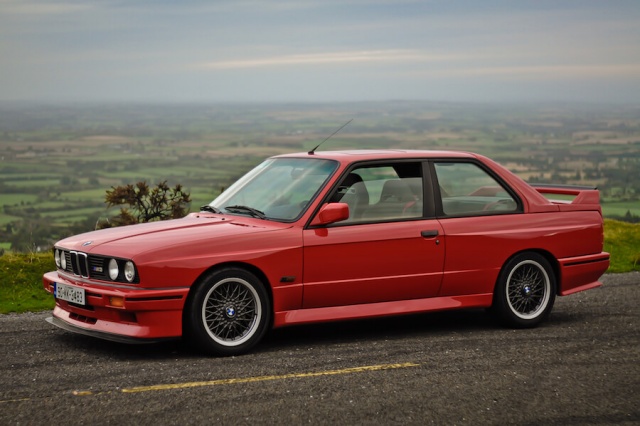
Extra chassis stiffening and bracing gave the revised suspension a more stable base to work from, and the brakes were uprated to cope with the increased pace. The four-cylinder 'S14' engine used a head adapted from the unit used in BMW's M1 supercar and loved to rev, with 200hp initially available from 2.3 litres of displacement, while the ultimate 2.5-litre version used in the Sport Evolution model saw close to 240hp with additions like oil-cooled pistons and special valves. European-spec cars featured a 'dogleg' shift pattern on the Getrag close-ratio gearbox, which placed second through to fifth gear in the main H-pattern, yet another feature dictated by competition.
All in all this was a pretty thorough exercise, and the trophies followed. Believe it or not, the M3 is the most successful touring car in history, and its legacy lives on in today's M cars. The E30 is the Holy Grail of BMWs for motorsport aficionados thanks to its homologation-special roots, and many racing drivers lucky enough to have competed in it class it as the best car they've ever driven. The humble three-box coupe won nearly every touring car race and championship of note you can think of during its reign, and Prodrive (of Subaru WRC fame) even campaigned versions on the rally stages, unfortunately with limited success at world level for the same reason as the Cossie. The sight and sound of Austin McHale's black XtraVision car roaring its way up Knockalla will have stuck in many a mind to this day however…
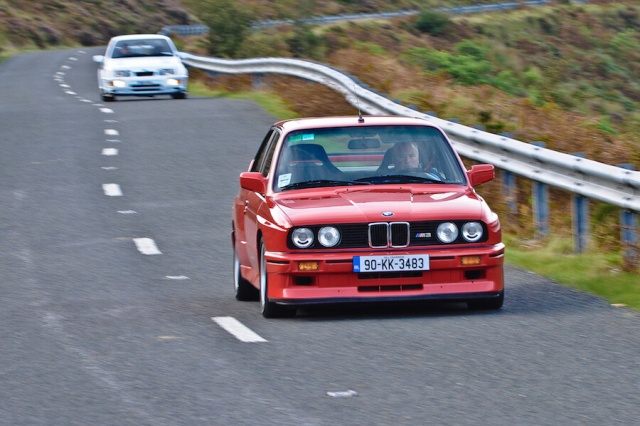
The road cars were a rare sight over here even when new, so to spot an E30 M3 Sport Evolution in Brilliant Red tailing a Cossie on a crisp Saturday dawn is enough to send even the most lapsed of petrolheads into a semi-convulsion. Yes you read that right, Sport Evolution. To a casual observer it's an old red car, but to an enthusiast it's something hugely special. I'm still pinching myself that we were granted access to such a rare example, and it's in even better nick than we could have hoped, a huge credit to owner Tom. Looks-wise, it's a lot more restrained than the Cossie, but the wide arches and subtle flicks of the splitter and spoiler give it a menacing stance. Photographer Cian wants about thirty minutes for static shots, so I take a few paces back to try and drink in all the little details and differences between the two machines, the aero approach being the most obvious. A couple of modern cars are parked nearby, and it's only then you realise how small these old warriors are. The longest thirty-minute wait in history finally elapses, and it's time to take the M3 for a spin.
The first and most noticeable thing is that you're on the wrong side, as all E30 M3s were left-hand drive. This seems to exaggerate how close the door is to your left arm, but it's easily forgotten when you twist the key and the S14 unit barks into life with the inertia-free enthusiasm that only a race engine can.
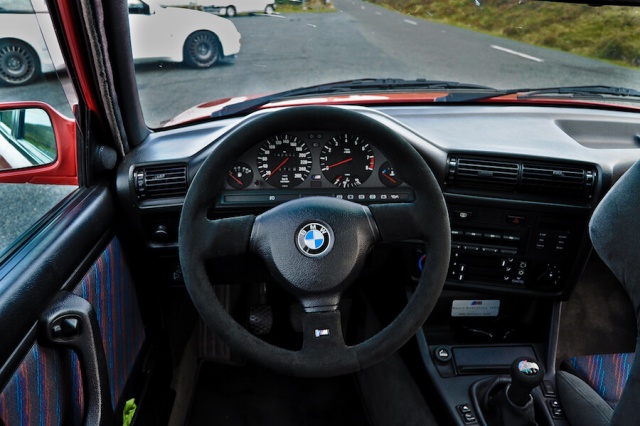
In your hands sits the most beautiful steering wheel ever found in a production car, trimmed in Alcantara, along with the gear knob and handbrake lever. The wheel itself seems to sit at a slightly strange angle like all other E30s, and the driving position given by the snug Recaro bucket is upright and business-like. In to first (left and back thanks to the dogleg pattern of course) and off you go, with just a tickle of revs enough to get you moving. After about 50 metres you know exactly what the M3 is going to handle like. The communication through the wheel and seat base is on another level to anything I've ever driven, and is a perfect demonstration of the benefits of properly sorted damping supporting a stiff chassis. It's a fantastic experience, feeling every single millimetre of tarmac under the tyres fizz into the palm of your hand and the seat of your pants, and it's this sort of feedback that inspires confidence and gives you the courage to push the M3 hard almost straight away. The shift on the Getrag gearbox is supremely positive, and the engine pulls nicely from low down without really blowing your socks off, saving its party piece for later in the rev range as the needle chases the redline like a maniac and the induction noise fills the cabin with a demonic wail.
Outright speed isn't the point of this car though, and truth be told it doesn't feel crazily fast despite the low 1,200kg kerbweight. It's more about carrying speed, taking advantage of the balance shift from corner entry to exit and feeling the road come alive beneath you. The steering is a little slow-witted in the typical E30 style, but doesn't detract hugely from the experience, and the brakes are feelsome and faithful, the pedal box clearly designed by a heel-and-toe enthusiast. The most surprising aspect is how different it feels overall to a regular E30, and the sensation is closer to that of an extremely well-sorted front-wheel drive car than a tail-out crowd pleaser.
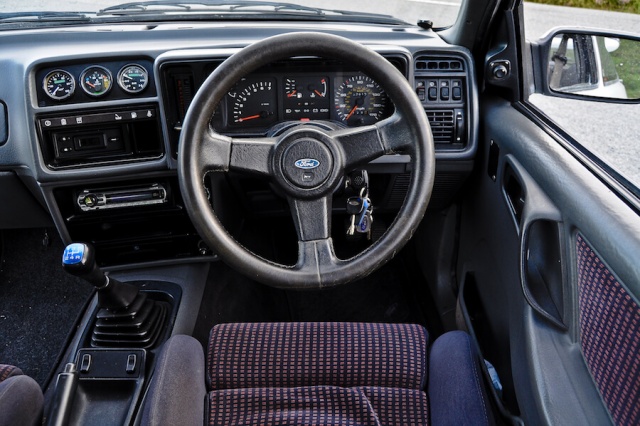
So how does the Sierra feel after the Teutonic precision instrument? First impressions are good to be honest. You sit lower than in the E30, and the expanse of glass and pencil-thin pillars gives an airy view of your surroundings, apart from out of the rear window, which is blocked by the gigantic wing. It's hard not to form a small smile, especially when you notice the eighties-tastic boost gauge in the top left corner of the instrument binnacle. The RS-specific wheel is chunky with spokes that force your hands slightly above quarter-to-three, and the lumpy idle of the Cosworth YB permeates the cabin with a loud ignorant drone. The clutch is rather stiff and has a sharp bite, so inevitably you stall on the first attempt to pull away. And the attempt after that.
Never mind, because now you're underway and things are going fine. It's not that fast you think to yourself, and you let the revs climb over 4,000 with a prod on the short-travel throttle pedal. OH HOLY CRAP.
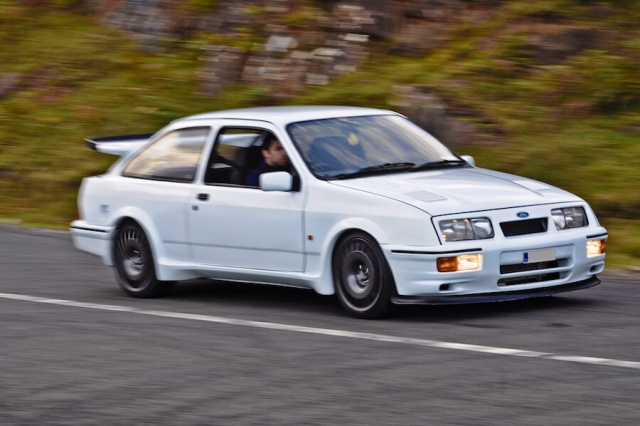
The god of Garrett has awoken and is now force-feeding compressed air into the previously docile YB (John has fitted an RS500-spec turbo), and things are coming at you awfully fast and at a slight angle. The rear tyres shrug their sidewalls and don't even try to contain the forces now coming through them, so the only option is to change up a gear and try again. There's an almighty chatter as excess boost pressure gets vented, third finally engages somewhere in the bowels of the Borg-Warner gearbox and the whole process starts again, only with added speed. Tackling a sequence of corners takes the form of playing chicken with the loud pedal until the steering wheel is dead straight, and even then the spiky power delivery makes it difficult to piece together any sort of rhythm. The steering feels inert after the BMW's, but the brakes and damping are excellent, something you're grateful for as the boost takes you toward the horizon at an alarming rate. Planting your right shoe in fifth gear is met with a lift of the nose and a thrust that still pins you into your seat, so in the wet this car must be a complete handful. The Cosworth is proper scary in the best tradition of old-school turbocharged monsters, and you'd better be on your toes to stay on top of it.
These cars mark two completely different approaches to the same end goal. The BMW is a scalpel with which you dissect the road ahead, feeling every nuance of the surface and using that information to choose your line with precision, wringing the maximum out of the engine and totally immersing you in the experience. The Sierra on the other hand is a sledgehammer that pounds the tarmac into submission, dragging you along on a wave of turbocharged torque and keeping you hanging on for dear life. I have no doubt that you could probably extract the same time out of both cars on a twisty section of closed road given enough practice in each, but the sensations felt afterwards would demonstrate exactly how diverse these cars are. You'd get out of the Sierra weak-kneed and sweaty with your hands possibly locked in a counter-steering pose, but I guarantee that you'd turn the M3 around and keep going again until the fuel tank ran dry.
Thanks to John Murphy and Tom McGuire for the cars, and Cian Donnellan for the photos.
Read the first in the series of Irish icons: Ford Escort MkII
Read the second in the series of Irish icons: Mitsubishi Lancer Evolution
Read the third in the series of Irish icons: Honda Integra DC2 Type-R
Read the fourth in the series of Irish icons: BMW E30 325i Sport





